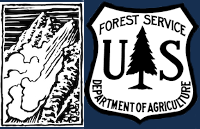Snowpack and Avalanche Discussion
<p><span><span><span><span><span><span>Avalanches involving the recent snow are possible for a person to trigger. The main concern is </span></span></span></span></span></span><span><span><span><strong><span><span>wind slab avalanches </span></span></strong></span></span></span><span><span><span><span><span><span>breaking 6 inches to 2 feet deep where the new snow is drifted into thicker or stiffer slabs. Yesterday the wind was calm, so if the wind increases today there is still plenty of soft snow to be drifted into fresh, reactive wind slabs.</span></span></span></span></span></span></p>
<p><span><span><span><span><span><span>Yesterday, near Cooke City there were a handful of small avalanches (</span></span></span></span></span></span><a href="https://www.mtavalanche.com/node/34584"><span><span><span><strong><span…;), and in the Centennials near Island Park Mark saw a larger avalanche that broke on or under a crust below the new snow (</span></span></span></span></span></span><a href="https://www.youtube.com/watch?v=3ziK29iO3zQ&list=PLXu5151nmAvToI_ir…;). These occurred where there was just the slightest bit of wind to stiffen the snow surface. Avoid wind-loaded slopes near ridgelines to minimize the chances of triggering an avalanche. Watch for snow blowing off ridges, and look for cracking around your skis as signs of fresh wind slabs.</span></span></span></span></span></span></p>
<p><span><span><span><strong><span><span>Loose snow avalanches, </span></span></strong></span></span></span><span><span><span><span><span><span>dry or wet, are also possible and can easily run long distances on the crust below the new snow (</span></span></span></span></span></span><a href="https://www.youtube.com/watch?v=6pLrdFVFpdE&list=PLXu5151nmAvToI_ir…;. These will be small and somewhat predictable, but could be dangerous if they drag you into rocks, trees or over a cliff. If the sun shines it may quickly soften the snow surface and increase the chance of wet loose slides on sunny slopes.</span></span></span></span></span></span></p>
<p><span><span><span><span><span><span>In the southern Madison and southern Gallatin ranges and near West Yellowstone, the weak snow that was buried in late January can produce deeper </span></span></span></span></span></span><span><span><span><strong><span><span>persistent slab avalanches</span></span></strong></span></span></span><span><span><span><span><span><span>. <strong>Yesterday in the Taylor Fork a snowmobiler triggered a 4 foot deep slide in an isolated short, steep pocket of snow</strong> (</span></span></span></span></span></span><a href="https://www.mtavalanche.com/node/34599"><span><span><span><strong><span… and observation</span></span></u></span></strong></span></span></span></a><span><span><span><span><span><span>). This underscores the importance of only exposing one person at a time to steep slopes, and carrying proper avalanche rescue gear (transceiver, shovel and probe). These types of slides have become increasingly less frequent, but we could see more with the added weight of new snow over the next few days.</span></span></span></span></span></span></p>
<p><span><span><span><span><span><span>Today the avalanche danger is MODERATE across the forecast area.</span></span></span></span></span></span></p>
